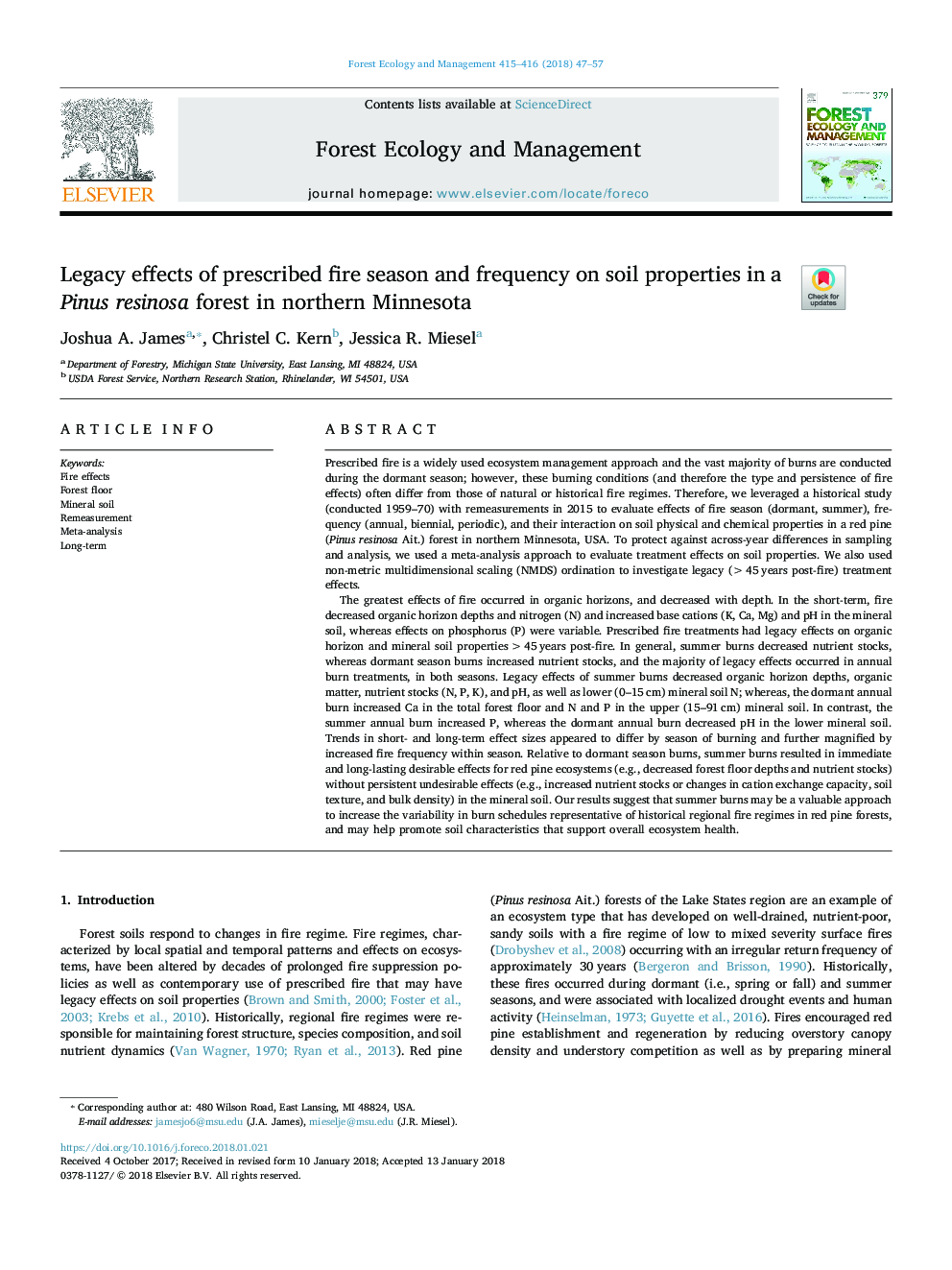| Article ID | Journal | Published Year | Pages | File Type |
|---|---|---|---|---|
| 6541768 | Forest Ecology and Management | 2018 | 11 Pages |
Abstract
The greatest effects of fire occurred in organic horizons, and decreased with depth. In the short-term, fire decreased organic horizon depths and nitrogen (N) and increased base cations (K, Ca, Mg) and pH in the mineral soil, whereas effects on phosphorus (P) were variable. Prescribed fire treatments had legacy effects on organic horizon and mineral soil properties >45â¯years post-fire. In general, summer burns decreased nutrient stocks, whereas dormant season burns increased nutrient stocks, and the majority of legacy effects occurred in annual burn treatments, in both seasons. Legacy effects of summer burns decreased organic horizon depths, organic matter, nutrient stocks (N, P, K), and pH, as well as lower (0-15â¯cm) mineral soil N; whereas, the dormant annual burn increased Ca in the total forest floor and N and P in the upper (15-91â¯cm) mineral soil. In contrast, the summer annual burn increased P, whereas the dormant annual burn decreased pH in the lower mineral soil. Trends in short- and long-term effect sizes appeared to differ by season of burning and further magnified by increased fire frequency within season. Relative to dormant season burns, summer burns resulted in immediate and long-lasting desirable effects for red pine ecosystems (e.g., decreased forest floor depths and nutrient stocks) without persistent undesirable effects (e.g., increased nutrient stocks or changes in cation exchange capacity, soil texture, and bulk density) in the mineral soil. Our results suggest that summer burns may be a valuable approach to increase the variability in burn schedules representative of historical regional fire regimes in red pine forests, and may help promote soil characteristics that support overall ecosystem health.
Related Topics
Life Sciences
Agricultural and Biological Sciences
Ecology, Evolution, Behavior and Systematics
Authors
Joshua A. James, Christel C. Kern, Jessica R. Miesel,
